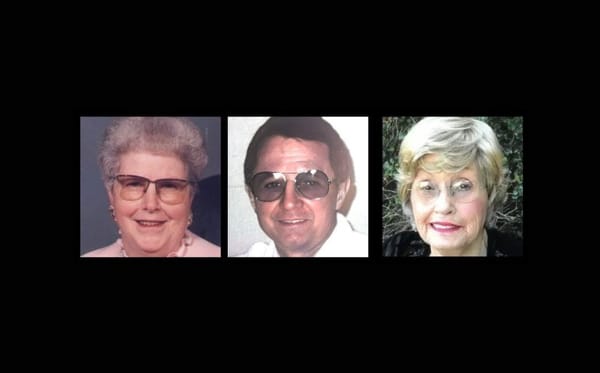Federal court gives Illinois another chance to tweak legislative maps
The court declined to send the issue to a bipartisan commission.

SPRINGFIELD – A three-judge federal court panel in Chicago ruled Tuesday, Oct. 19, 2021, that the legislative redistricting plan that Gov. JB Pritzker signed into law in June – before official 2020 U.S. Census numbers were available – was unconstitutional because the population variances among districts violated the “one-person, one-vote” doctrine. Tuesday's ruling applies to state legislative districts maps, not to Congressional district maps, which we reported on yesterday. Both sets of maps would put Stateline residents into new districts.
The court gave the plaintiffs until Nov. 8 to submit their proposed revisions to the second set of maps, along with a statement explaining how those revisions would correct any constitutional defects. Defendants then have until Nov. 18 to respond to those proposed revisions.
The court did not, as Republican officials had hoped, order that a bipartisan redistricting commission be formed to redraw the maps, calling that “implausible,” given the limited time remaining before the 2022 primaries. If the Illinois General Assembly hasn't made a decision by June 30, the state constitution required the formation of a bipartisan legislative commission. However, bipartisan in this case doesn't mean non-political or independent. The commission would merely be evenly stacked with Republicans and Democrats. They would presumably have to talk with each other, but if they don't come to a compromise (it's only happened once), either party would have a 50-50 chance of controlling the outcome. The Illinois Supreme Court chooses two names, one from each major party, to be placed into a replica Abraham Lincoln stovepipe hat. The name that is drawn becomes the tiebreaker.
Several states, attempting to free redistricting from partisan control, have moved entirely to bipartisan redistricting commissions. In 2018, J.B. Pritzker called for a constitutional amendment to set up such a commission in Illinois and promised to veto maps “in any way drafted or created by legislators, political party leaders and/or their staffs or allies.”
Disturbingly, the judges also rejected the notion that legislative maps could be held unconstitutional simply because they were drawn to protect the majority party, citing a U.S. 2019 Supreme Court decision. Under the current system, Illinois legislators are motivated to create districts where the members of the opposing party is split across district boundaries, making their own party the majority.
Instead of referring the process to a commission, the judges declared the second set of maps that Pritzker signed in September, following a legislative special session, to be a “starting point” in developing a new map, and it invited plaintiffs in two cases challenging the redistricting process to propose their own solutions.
“Challenges to redistricting maps are routine. They occur every 10 years, like clockwork, during each census cycle,” the court wrote. Illinois redistricting maps were also challenged in court in 2000 and 2010. “As this case and countless before it illustrate, parties need time to compile a record; courts need time to issue a ruling; and on occasion one or another aspect of a redistricting plan needs revision to comply with the law. Sometimes the revisions are minor.”
That opinion set the stage for the next phase of the two lawsuits that were filed in June, arguing that the legislative maps that Democrats pushed through the General Assembly in the spring violated the equal protection clause of the U.S. Constitution. Diluting the strength of a minority political party is legal and routine - that may be a reason for splitting Roscoe into three Congressional districts, since Roscoe contains a Republican majority in a Democratic region - even while diluting the vote of ethnic or religious minorities is unconstitutional.
The maps drawn in the spring were based on population estimates from the Census Bureau’s American Community Survey because official data from the 2020 census had been delayed, largely due to the pandemic, though national politics came into play as well.
Democrats argued that they needed to move forward because the Illinois Constitution gives the General Assembly until only June 30 in the year following a decennial census to approve a redistricting plan, or else a bipartisan commission would make the plan. The official census numbers were not available until mid-August.
One of the lawsuits was filed by Republican leaders of the General Assembly, Sen. Dan McConchie, of Hawthorn Woods, and Rep. Jim Durkin, of Western Springs. They were later joined by the House and Senate GOP caucuses and the Illinois Republican Party.
They urged the court to declare the maps unconstitutional and, because no constitutional maps had been enacted by June 30, order the formation of the bipartisan commission required under the Illinois Constitution.
The second lawsuit was filed by a group of Hispanic voters in the Chicago area who were represented by attorneys from the Mexican American Legal Defense and Educational Fund, or MALDEF. They had asked the court to declare the maps unconstitutional and for the court itself to order a remedy. Though not parties in the lawsuit, Jewish and Muslim groups had also proposed changes in district boundaries.
But defendants in the case – who included House Speaker Emanuel “Chris” Welch (D), Senate President Don Harmon (D), the Illinois State Board of Elections and its individual members - argued that because lawmakers had come back in the summer to pass a second set of maps, any challenge to the first set of maps should be considered “moot.”
The court, however, rejected that argument on a technicality, noting that even though lawmakers had passed a second set of maps, they never specifically repealed the first set, which meant there was nothing to prevent the Democratic majority from going back at a later date and re-enacting them.
“The commission does not come into play upon the striking down of a legislature-enacted plan any more than the General Assembly takes over if a commission-enacted plan fails to satisfy the courts,” the judges wrote. “Instead, the commission amounts to an alternative process for producing an ‘effective’ map in the first instance if the political branches are unable to do so by the deadline.”
The judges affirmed that "gerrymandering" - drawing oddly-shaped districts to favor one party - is legal. However, the Illinois constitution requires that districts be "compact, contiguous and substantially equal in population." [Ill. Const. art. IV, § 3(a)] . That would seem to rule out skinny districts that snake across large sections of Illinois, such as the proposed Congressional boundaries, which have no similar limitations.
The court confirmed that “political considerations are not unconstitutional and courts are reluctant to wade into, much less to reverse, partisan maps, including those that amount to political gerrymanders,” citing a 2019 U.S. Supreme Court case. “And we are not so naive as to imagine that any party in power would decline to exercise levers available to it to maximize its opportunity to retain seats in the General Assembly.”
But the court also had some harsh criticisms for the process used to pass the second set of maps, including the fact that the public was given only a few hours to review those maps before they were voted on in the House and Senate.
“Taking into account the totality of the circumstances — both agreed and disputed — we will proceed therefore toward the approval of a map for Illinois legislative districts for the next decade using the September Redistricting Plan as a starting point, but also carefully considering the legal challenges raised in the operative second amended complaints,” the court wrote.
Both the Republicans and the MALDEF plaintiffs have argued that the second set of maps is unconstitutional as well, Though the Latino population grew substantially between 2010 and 2020, the new maps reduce the number of Latino-majority districts in both the House and Senate,
McConchie and Durkin issued a joint statement Tuesday calling the decision a victory.
“During this process the Republican caucuses consistently demanded transparency and fairness in mapmaking, which were rejected by the Democrats and Governor Pritzker,” they said. “The court’s ruling validates all the concerns that were raised during the Democrats’ unconstitutional attempt to gerrymander Illinois.”
Senate President Don Harmon issued his own statement following the decision.
“I am gratified that the court recognized that the General Assembly, in unique and unprecedented circumstances, did what we could do in May to fulfill our constitutional obligations, and did what we should do in September to ensure our maps are constitutional," he said in a statement distributed by a spokesperson. “The Republicans’ preferred remedy was indeed “far-fetched.” Now, the Republicans finally need to put forward their own maps instead of simply complaining about ours.”
The next status hearing in the case was set for Nov. 5.
Peter Hancock of Capitol News Illinois provided most of this reporting. Capitol News Illinois is a nonprofit, nonpartisan news service covering state government and distributed to more than 400 newspapers statewide. It is funded primarily by the Illinois Press Foundation and the Robert R. McCormick Foundation.
A previous version of this story said that, in the case of disagreement, the tiebreaker in a redistricting commission would be chosen by a coin toss. In fact, in that case, legislative boundaries for the next ten years would be chosen by drawing a name out of a stovepipe hat. We regret the error. And the situation. We think Abraham Lincoln might too.





